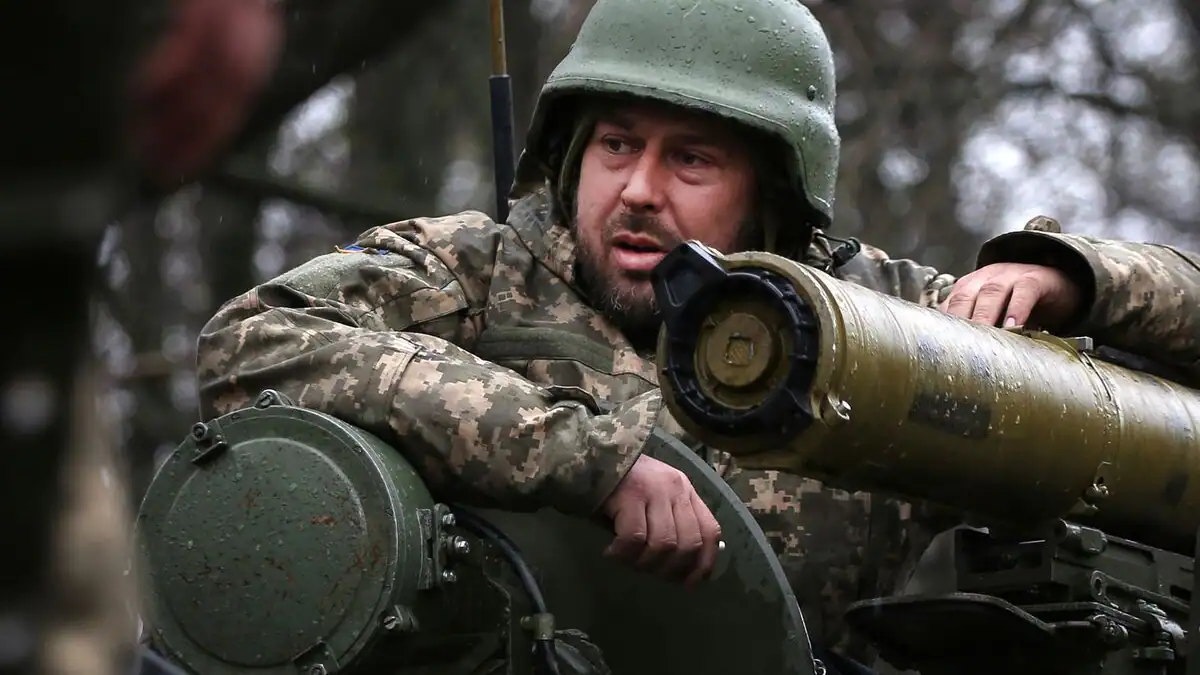In difficulty in the east of the country, Ukraine is asking its allies to speed up the delivery of arms, since it has received only a fraction of the shipments promised for months by the West.
• Read also: Is the Russian economy on the verge of collapse?
• Read also: Russia may use ‘small’ nuclear weapons in Ukraine
“The Russia/Ukraine artillery ratio is around ten to one in some areas. I receive daily messages from our fighters who tell us “We hold on, just tell us when the weapons will arrive” tweeted the adviser to the Ukrainian presidency, Mykhïlo Podoliak, a few hours before a meeting of Westerners in Brussels on Wednesday.
Ukraine has so far received “only about 10%” of the weapons it needs, according to the country’s defense ministry. Washington, London and their allies had nevertheless promised to send multiple rocket launcher systems and weapons capable of combating Russian troops.
Russia, for its part, announced that it had destroyed a large depot of weapons supplied by NATO in western Ukraine.
Will the Westerners manage to keep their promise? Here are some of the challenges of delivering weapons and military equipment in times of war.
Maintain military secrecy
First, as some weapons contain new technologies, we must make sure to modify them so that they do not reveal their secrets if they pass into the hands of the Russians during the battle.
Before sending their equipment, the allied countries must therefore sometimes modify it, explains Éric Ouellet, professor specializing in strategic military command and decision-making at the Canadian Forces College.
“There was talk of sending Harpoon anti-ship missiles to the Ukrainians. But the company that manufactures these missiles is American, and these missiles contain technological secrets that the Americans do not want to reveal. So they can’t send them without making changes,” he says.
These modifications can also be long and complex.
“It doesn’t happen overnight, it’s a bit like changing the DOS of your computer to put another one, it’s not easy”, illustrates the professor.
Long Atlantic crossing
Once the shipments are ready, they still have to be sent across the Atlantic when they come from North America.
Certain types of heavy equipment promised by Canada and the United States, such as howitzers and their vehicles, are too heavy to be sent by plane, which complicates and slows down their transport.
“Heavy weapons have to come by ship because they damage planes and significantly reduce their longevity. It could therefore take weeks before they arrive in Ukraine, ”says Éric Ouellet.
Far from the fights
Second, Westerners cannot deliver arms directly to Ukraine. This would be, in the eyes of Russia, a direct involvement in the conflict, which could escalate the conflict.
The cargoes must therefore be left far from the battlefield, on the border of an allied country in the West, where Vladimir Putin’s troops are less numerous, indicates Richard Giguère.
“We believe that it goes a lot through Poland and Romania. The challenge is that the Ukrainians have to cross the entire country to supply the troops who are in the east, which makes the shipments much more likely to be targeted,” he explains. .
To give you an idea, more than 1200 km separate the Lviv region, near the Polish border, from that of Donetsk, where fighting is taking place in the West. Deliveries, which are mainly made by truck and train, can therefore take more than 15 hours.
• Read also: Here’s why Putin wants to win the war in Ukraine before May 9
Diversified and complex systems
Once the shipments have been received, a race against time begins to train the soldiers who will use them, says Éric Ouellet.
“You have to make sure that the weapons can be used to their full potential and some of these weapon systems are very complicated to use, especially when you’re talking about artillery and drones,” he says.
And these formations will not be easy in Ukraine, assures Richard Giguère.
“In my career, I had several training courses on combat systems. Some of them took me up to two months to master and I had no bombs falling on my head,” says the retired brigadier-general.
The range of equipment flowing into Ukraine could also pose a significant challenge.
“The more we multiply the sources of origin of the weapons, the more there are weapons of different models in circulation and the more the logistics are complicated. For example, American ammunition does not necessarily go into German weapons”, he illustrates.

